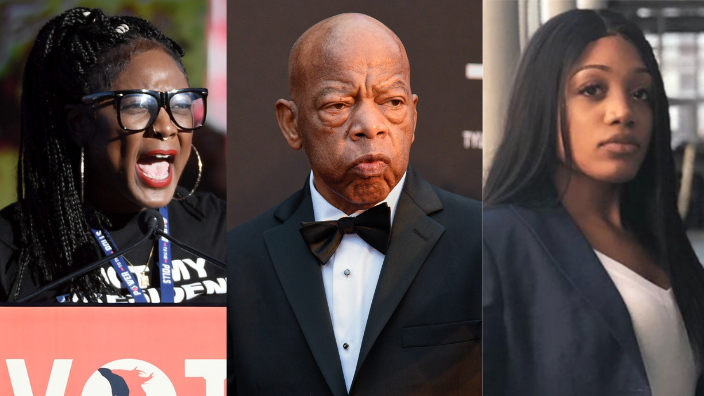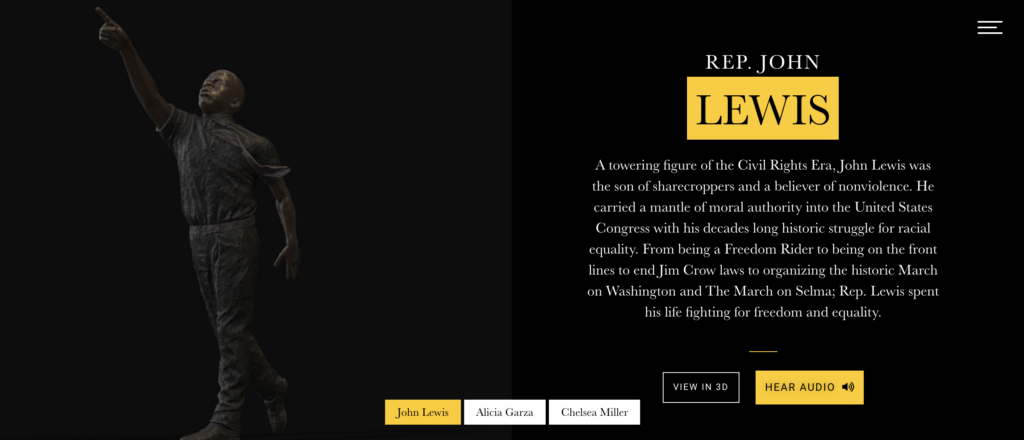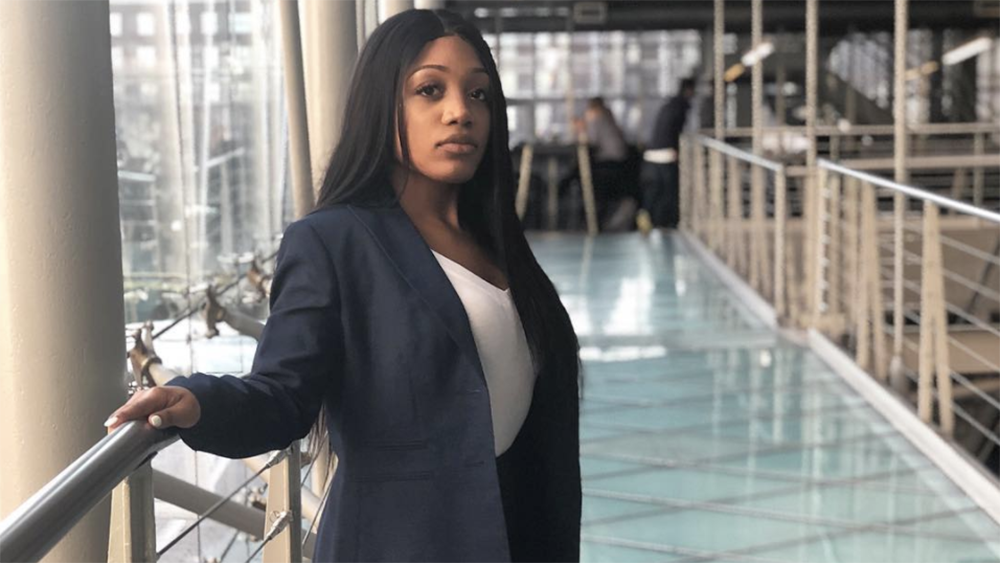Instagram users can now virtually replace Confederate monuments with Black activist statues
EXCLUSIVE: Activists Alicia Garza and Chelsea Miller discuss The Pedestal Project's innovative AR technology to honor contemporary Black figures.

As Black History Month comes to a close the conversation this year, as in recent years, revolved around how to bring the discussion into the future, well past Feb. 28. Color Of Change, the nation’s largest online racial justice organization, found a way to do just that with the launch of an augmented reality (AR) experience on Instagram that lets you place statues of racial justice leaders atop empty pedestals where confederate statues once stood.

Read More: Oversimplifying Black history: What schools do wrong
How’s that for a 2021 spin on Black history?
The initiative is called The Pedestal Project and launched earlier this month with three incredible racial justice leaders to honor and virtually place on the empty pedestals where the likes of Robert E. Lee and Stonewall Jackson once stood: John Lewis, Civil Rights leader and former United States Congressman, Alicia Garza, Co-founder of the Black Lives Matter movement and principal at Black Futures Lab, and Chelsea Miller, Co-founder of Freedom March NYC.

It’s super easy too, for anyone suffering from TikTok-related PTSD. The Pedestal Project Instagram Lens is activated via a mobile device on the Color of Change Instagram page and encourages folks to go outside, safely, within their own communities to find empty pedestals where confederate symbols once stood. After accessing the lens, you’ll be able to select from a gallery of statues, place it atop an empty pedestal, and in the activists’ own voice, hear why change is worth fighting for.
Don’t forget to snap a picture or a video of your experience and share by tagging @ColorOfChange.
theGrio had the opportunity to chat with two of the campaign’s stars — Garza and Miller — who gave more insight on the project that’s here to stay and how their respective orgs continue to fight racism amidst a global health crisis.
The Pedestal Project is focused on the concept of remembering rather than forgetting Black History, very much like why Black History Month was created. What efforts, lessons, etc. would you like to see from schools in 2021 around teaching Black history?
Alicia Garza: This is a critical time for our education system, as for the last decade, at least, we have seen sustained attacks on the accurate and complex narration of Black histories and the present state of Black America. This ranges from the attacks on Ethnic Studies programs to the attacks on Critical Race Studies and the 1619 Project, but it also extends beyond it to the attacks on diversity training for federal employees, and the failed 1776 commission. In Texas, there was even an attempt to change textbooks in one school district to discuss slavery as what happened when people from Africa immigrated to America to work.

These types of distortions are intentionally designed to further a project of amnesia, and we know that what we forget about our history we are destined to repeat. I would like to see schools teach racism differently —talking about it in relation to rigged rules that are designed to concentrate power and resources into the hands of a few, at the expense of the many. In doing so, we can broaden our understanding of racism from the most extreme versions of racial terror, extended through groups like the Proud Boys or the Ku Klux Klan, to the rules that organize our lives, our economy, and our government.
Chelsea Miller: Black history is world history. It’s time for us to challenge the narratives that have been told to justify the dehumanization, oppression, and silencing of BIPOC communities. Black history didn’t begin with slavery nor will it end with it. Know the names of Black philosophers, historians, inventors, musicians, and revolutionaries. Teach our youth not just flash points of Black trauma but the full breadth of Black joy, culture, and history.
If you could suggest other leaders like yourself to be featured as part of the Pedestal Project in the future, who would those be?
AG: There are so many people, historical and contemporary, that would be lovely for this project. A few that I can name now, but by no means an exhaustive list, include people like Pauli Murray, Miss Major, Harriet Tubman, Raquel Willis, Gina Clayton Johnson, Lateefah Simon, Patrisse Cullors, and so many more.
CM: So many incredible Black women organizers come to mind. Zyahna Bryant, Nia White, Nupol Kiazolu, Nialah Edari, Mary-Pat Hector, Qween Jean, Tamika Mallory, and so many others.

Alicia, many people are familiar with your work within the BLM movement, which has spread so wide, it’s amazing to see. Can you speak to your work with Black Futures Lab and specifically, how you see the connection between Black history and Black futures, which the Pedestal Project threads together so well?
AG: In my work at the Black Futures Lab, we are focused on building and transforming power. We do that by investing in our community — building our organizing and political infrastructure, motivating and engaging Black people in the political process in new and innovative ways, and leveraging our community assets to make lasting change. We believe that building Black power is a science and an art, and we thrive off the magic that happens when we realize that we do have power — and now we need to leverage it to make the changes that we long for.
For us, the thread between Black history and Black Futures lies in what happens when we tap our people for the imagination needed to make American live up to its promises of freedom, justice, and liberty for all. Black people have always been the light at the end of the tunnel, articulating with clarity and determination what needs to change and how it needs to change in order for all of us to live with dignity.
Chelsea, during these unprecedented times of coronavirus, where gatherings like the Freedom March NYC are becoming increasingly difficult or impossible to make happen, what are the alternatives? What are your thoughts on in-person activism during a pandemic?
CM: The death of George Floyd shook our country. A shake that is not unfamiliar to our history, but rather was made all the more jarring by the realization we were in a global pandemic. The realities organizers faced, was having to choose between two pandemics: staying home to fight the spread of COVID-19 or going out to stand against racism. As a young Black woman, I chose to go out there for those who could not. I chose to go out there with a commitment to centering the message of this movement. A movement that shouldn’t be framed around a discourse of looting but rather a discourse of reckoning with our country’s history.
For those folks who want to support the BLM movement, Black Futures Lab, Freedom March NYC, Color of Change, and other Black activist groups/organizations by doing more than posting a hashtag or sharing a filter — where can they start?
AG: It’s really important to figure out what it is that you care about, find other people who care about the same things that you do, and join them.
CM: I always say, don’t be a bystander to history. Donate, amplify. Support the work for the long haul. Get involved in organizations creating change in your community. I would also add, there are so many ways your talents and resources can support the movement.
To learn more about the initiative and to find a local empty pedestal, visit ThePedestalProject.com and help turn these ill-conceived pedestals into beacons of racial justice.
